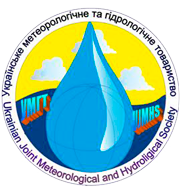Сharacteristics of demolition waste management in the regions of Ukraine
Abstract
The volume of waste left from war-related destruction amounts to 10-12 million tons per year. Such volume is comparable to the annual volume of municipal solid waste generated in Ukraine. This situation led to formation of unauthorized landfills and complicated the existing problem of industrial, consumer, construction and demolition waste management. Consequently, the issue of destruction waste management became a pressing environmental and socio-economic problem. The objective of this research is to assess the characteristics of destruction waste management in the regions of Ukraine. Destruction waste is generated during construction of new buildings and public structures, as well as during renovation or demolition of existing buildings and structures; including general-use facilities. It is estimated that, before the war, nearly 7 million tons of construction and demolition waste was generated annually, with more than 50% being transported to municipal solid waste landfills. Specialized landfills for its disposal were virtually non-existent in the regions of Ukraine, so this waste, despite its resource value, was taken to municipal solid waste landfills or unauthorized dumps. Some components of construction and demolition waste are toxic. Destruction waste includes parts (fragments) of damaged (destroyed) objects, as well as materials and items that were inside or next to such objects at the time of damage (destruction) and/or during disassembly activities, including those that fully or partially lost their consumer properties and cannot be reused at the place of their origin or discovery. Destruction waste pollutes the environment, so one of the ways to reduce environmental risks is to develop an effective waste management system to stop chaotic processes during disassembly activities. Destruction waste differs from construction and demolition waste by the presence of accompanying hazardous components, complicating the development of a waste management system. The main components of destruction waste should be used as secondary raw materials for construction, production of building materials and other purposes. Provided that appropriate physical-geographic, engineering-geological, hydrogeological, technical, and socio-economic conditions are available, it is advisable to create temporary waste storage sites, with their subsequent use as secondary raw materials in the post-war period for restoration of civil, industrial, and transport infrastructure in the regions of Ukraine.
References
Joshua, O. Reno (2019). Military Waste: The Unexpected Consequences of Permanent War Readiness. 1st edn. California: University of California Press.
Elgizawy, S.M., El-Haggar, S.M. & Nassar, K. (2016). Slum Development Using Zero Waste Concepts: Construction Waste Case Study. Procedia Engineering, 145, р. 1306.
Kambiz, G., Syuhaida, I. & Zainai, M. (2018). Construction and Demolition Waste: Its Origins and Causes. Advanced Science Letters, 24, p. 4132.
Verkhovna Rada of Ukraine (2022). Zakon Ukrainy «Pro upravlinia vidkhodamy» vid 20.06.2022 №2320-IX. [Law of Ukraine "On Waste Management" on 20.06.2022 №2320-IX]. Available at: https://zakon.rada.gov.ua/laws/card/2320-20 (Accessed 21.01.2024).
Shuvaiev, A.A. & Bielousova, O.S. (2021). Zakonodavche rehuliuvannia yak faktor obmezhennia zaluchennia vidkhodiv budivnytstva ta znosu u povtornyi hospodarskyi obih [Legislative regulation as a factor limiting the involvement of construction and demolition waste in the economic cycle]. Mizhnarodnyi naukovyi zhurnal «Hraal nauky» [International scientific journal "Grail of Science"], 11, pp. 594-595.
Layla Khalaf-Kairouz (2017). Post wars solid waste. Waste Management, 68, pp. 1-2. https://doi.org/10.1016/j.wasman.2017.09.006
Mykhailenko, V. & Safranov, T. (2021). Estimation of Input of Unintentionally Produced Persistent Organic Pollutants into the Air Basin of the Odessa Industrial-and-Urban Agglomeration. Journal of Ecological Engineering, 22(9), pp. 21–31. https://doi.org/10.12911/22998993/141479
SWEEPNET (2014). The Regional Solid Waste Exchange of Information and Expertise Network in Mashreq and Maghreb Countries. Country Report on Solid Waste Management-Lebanon, 63 р. Available at: https://www.retech-germany.net/fileadmin/retech/05_mediathek/laenderinformationen/Libanon_RA_ANG_WEB_Laenderprofile_sweep_net.pdf (Accessed 21.01.2024).
Hafurova, O.V. & Novak, T.S. (2023). Informatsiia pro vidkhody, shcho utvoriuiutsia vnaslidok viiny: pytannia pravovoho zabezpechennia. [Information on waste generated as a result of war: the issue of legal protection.] Naukovyi visnyk Uzhhorodskoho Natsionalnoho Universytetu. Seriia Pravo [Scientific Bulletin of the Uzhhorod National University. Law series], 79 (1), pp. 349-355.
United Nations (2001). Post-conflict environmental assessment: Albania. United Nations Environment Programme. Available at: https://wedocs.unep.org/20.500.11822/8615/ (Accessed 21.01.2024).
United Nations (2003). Post Afghanistan: Post-conflict Environmental Assessment. United Nations Environment Programme. Available at: https://wedocs.unep.org/handle/20.500.11822/7656 (Accessed 21.01.2024).
United Nations (2009). Integrating Environment in Post-conflict Needs Assessments: UNEP Guidance Note. United Nations Environment Programme. Available at: https://wedocs.unep.org/20.500.11822/17457 (Accessed 21.01.2024).
Vallini, J. еt al. (2018). Demolition waste for adsorption of metals: A step towards the circular economy. Journal of Environmental Management, 342. https://doi.org/10.1016/j.jenvman.2023.118200
Pacheco-Torgal, F. et al. (2020). Introduction to advances in construction and demolition waste. Woodhead Publishing Series in Civil and Structural Engineering. Advances in Construction and Demolition Waste Recycling. Woodhead Publishing, pp. 1-10. https://doi.org/10.1016/B978-0-12-819055-5.00001-2 (Accessed 21.01.2024).
Roussat, N., Dujet, С. & Méhu, J. (2009). Choosing a sustainable demolition waste management strategy using multicriteria decision analysis. Waste Management, 1 (29), pp. 12-20. https://doi.org/10.1016/j.wasman.2008.04.010
Cabinet of Ministers of Ukraine (2022). Poriadok vykonannia robit z demontazhu obiektiv, poshkodzhenykh (zruinovanykh) vnaslidok nadzvychainykh sytuatsii, voiennykh dii abo terorystychnykh aktiv, zatverdzhenoho postanovoiu Kabinetu Ministriv Ukrainy vid 19 kvitnia 2022 r. № 474 [The procedure for performing works on the dismantling of objects damaged (destroyed) as a result of emergency situations, military actions or acts of terrorism, approved by the resolution of the Cabinet of Ministers of Ukraine dated April 19, 2022] Available at: https://zakon.rada.gov.ua/laws/show/474-2022-%D0%BF#Text (Accessed 21.01.2024).
Cabinet of Ministers of Ukraine (2022). Poriadok povodzhennia z vidkhodamy, shcho utvorylys u zviazku z poshkodzhenniam (ruinuvanniam) budivel ta sporud vnaslidok boiovykh dii, terorystychnykh aktiv, dyversii abo provedenniam robit z likvidatsii yikh naslidkiv [The procedure for handling waste generated in connection with the damage (destruction) of buildings and structures as a result of hostilities, acts of terrorism, sabotage or carrying out work to eliminate their consequences]. Available at: https://zakon.rada.gov.ua/laws/show/1073-2022-%D0%BF#Text (Accessed 21.01.2024).
Safranov, T.A., Cherkez, Ye.A. & Shatalin, S.M. (2018). Otsinka spryiatlyvosti terytorii Odeskoi oblasti dlia rozmishchennia polihoniv tverdykh pobutovykh vidkhodiv [Assessment of the suitability of the territory of the Odesa region for the placement of landfills for solid household waste]. Ukrainskyi hidrometeorolohichnyi zhurnal [Ukrainian hydrometeorological journal], 21, pp. 98-109.





